
Behind The Song: Troye Sivan’s Fools
Producer Pip Norman breaks down the ultimate Chillwave vocal sound.
I unearthed a handful of synonyms to help me get a handle on the ambiguous Chillwave genre to which Troye Sivan has become attached. ‘Glo-fi’, absolutely no help. ‘Downtempo pop’ was probably the most clearcut, yet broadest explanation. Another was ‘hypnagogic pop’, as in that narcoleptic drowsiness that hits you just before you drift off to sleep. Maybe we can lose the labels and focus on the music then, because his song Fools certainly doesn’t put me to sleep.
It’s been a ‘sky’s the limit’ success story for 21-year-old Troye. He has more than four million YouTube subscribers, his album Blue Neighbourhood peaked at #6 on the Australian charts, and he’s sold over 150,000 copies in the US. It doesn’t stop with music, Sivan’s got acting chops too — he played James Howlett in X-Men Origins: Wolverine and in 2009 played a major role in the South African movie Spud, alongside John Cleese.
The young Perth-ite’s music is a melting pot of R&B, electronica, trip hop, psychedelic pop, and who knows what else. Sure, Fools starts with a simple vocal and piano verse, but by the chorus the song morphs into energetic snare snaps and synths breathing heavily with cutoff modulation.
Producer Pip Norman not only co-wrote the song Fools from the Blue Neighbourhood album, but engineered and produced it as well.
AT caught up with Pip at his cosy songwriting and recording space, Meliodora, in Northcote, Melbourne. It’s full of keyboards aged to perfection, including a Fender Rhodes, Korg MS20, a couple of Roland Junos, ARP Axe, Hillwood Blue Comets 73 synth and an upright piano miked with a couple of Rode NT5s. His collection of mics includes RCA DX77 and B&O vintage ribbons, Neumann M149 tube mic and a Shure SM7 dynamic, which is the perfect ‘just get it down’ mic. He’s also got a collection of guitars and a floor tom, left behind by an artist, that he sampled to turn into a kick drum for a Jarryd James track.
Norman works on Logic, but feeds it via some BAE 1073s, a UA 610 preamp, Focusrite ISA440 and an old RCA BA43 re-racked by Rob Squire at Proharmonic . He also has a tasty collection of outboard for tracking inspiration, including a Urei 1176, and Roland Space Echo. Norman fired up the session for Fools and talked us through his workflow for producing the song’s vocal tracks including a pre-mix to set the tone for the song and convince the A&R department. The vocals are laid back, yet full and present. They’re not just the hook of the song, but the core ingredient of the Chillwave sound.
ONE’S ENOUGH
Pip Norman: Troye laid down a single vocal for the whole first verse at the home studio of one of the co-writers. We tracked the vocals there and then, and that’s the vocal that ended up being on the track.
The chorus is also a single vocal — that’s all it needed to be. I grabbed it and pitched it down for the words ‘only fools.’
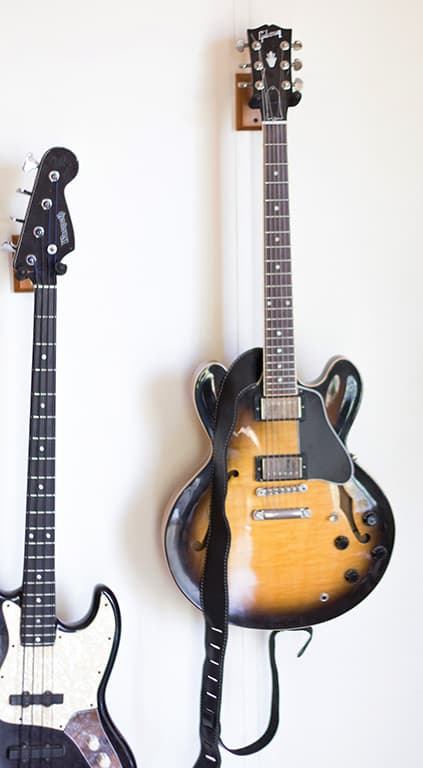

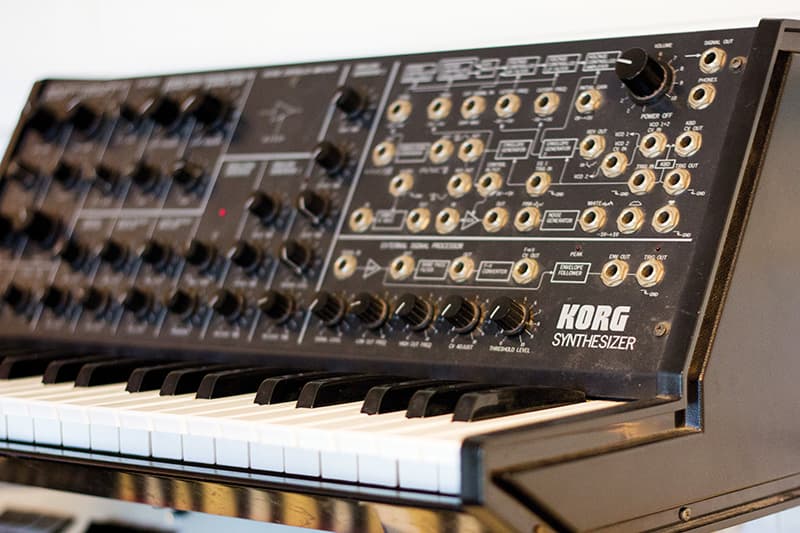
GROUP MENTALITY
PN: In the end we did some group vocals as BVs. I remember all of us standing around the mic doing take after take to get a bit of a group vibe, and I think I ended up processing it and chopping it up.
Because they were done in a demo day, I’ve gone in and edited it quite heavily — we weren’t there labouring over vocal performances. I also chopped it up to make those BVs feel more precise and robotic.
The BVs add to the haunting feeling in the pre-chorus. We got Troye to punctuate parts of the words, so he’s not even following the lyrics word for word — he’s listing all those facts to punctuate the imagery in the pre-chorus. There’s a lower part that’s doubled left and right, and a higher part.
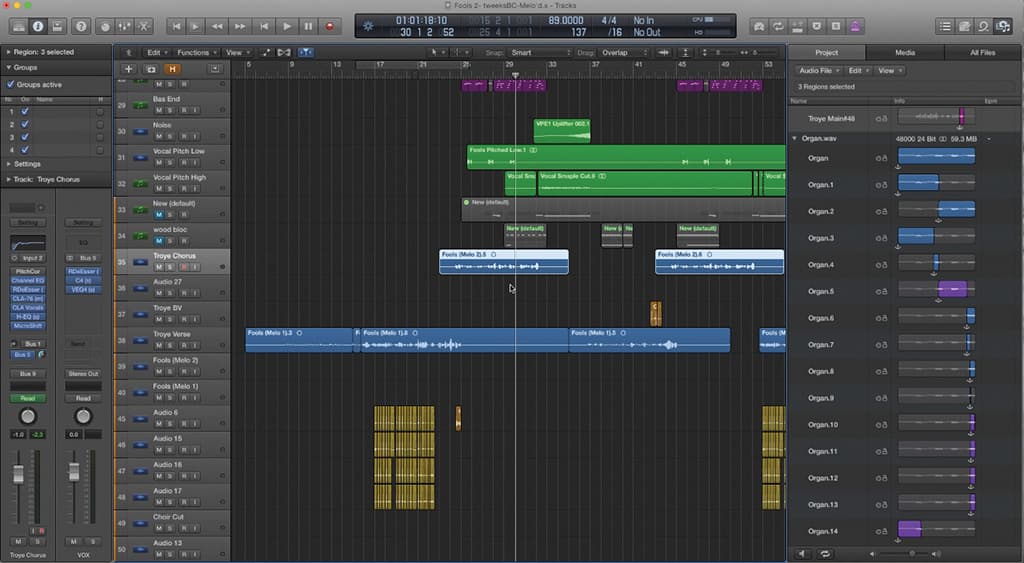
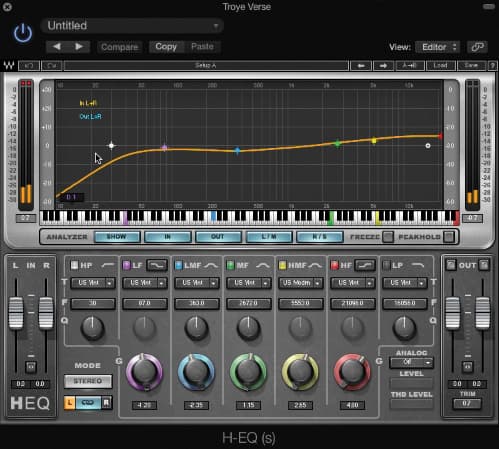

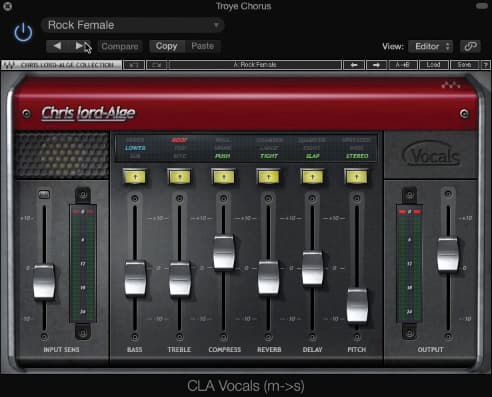


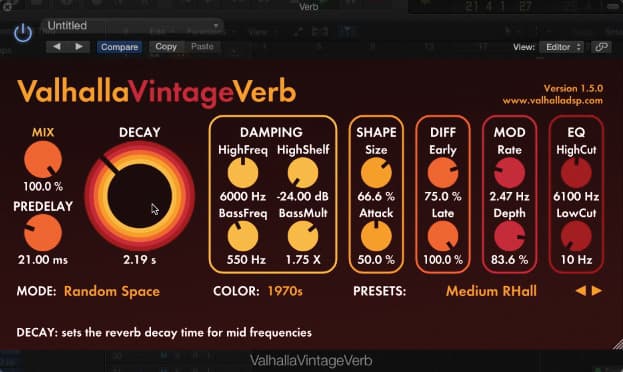

EFFECTING THE LEAD
PN: On the vocal track I’ve got an EQ, a de-esser, and a compressor. I like to use the CLA Vocals plug-in, especially in a co-write situation where you need to dial up a sound real quick. I’ve just slapped that on and run with it because it sounded good. I also used SoundToys’ Decapitator just to give it a bit of saturation and modern mood.
In the chorus I’m also using the SoundToys MicroShift plug-in. That’s where I’ve taken the reverb off, so it dries up in the chorus. The single vocal comes in a bit wider, but then the delay is still carrying it. I’ve dialled in a preset and messed with it a little bit, but that helps the chorus open up with a wider vocal. There’s a bit of stereo work going on with the CLA Vocals plug-in as well.
Long, saturated hall reverb is all over this kind of music these days. I was actually pretty conservative here, I’ve only used a pretty short version of it. Usually it’s cavernous and eternal. It just sets the vocals inside, and it drifts; everything sounds a little bit opiated and moody.
Then there’s a quarter note delay that’s a bit filtered out. It carries and creates that momentum and drifting character. It’s a modern sound; that kind of treatment puts it into the world of modern music. It does the job.
BACK TO BVS
PN: The BVs are going to their own summed bus with delay, reverb and compression. They’ve got their own effects on their summed group, whereas the main vocal has effects sent in an auxiliary. I’m using Valhalla VintageVerb for the reverb, which is always amazing, then the Waves H-Delay. It’s really simple, but that was what I used to try and sell the song and frame the vocals in the right way. I’ve taken off all the effects before it was exported for mix, but they set the scene and the tone for where the track was headed.
I really rate the Valhalla series. I’ve dialled in the ’70s version which is a bit more saturated and has a little more rolloff on the top. I’m not sure how much I’ve manipulated this from a preset, but I probably would have brought up a preset in the early stages — being a co-write, you just throw it up really quickly.








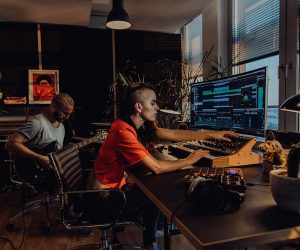
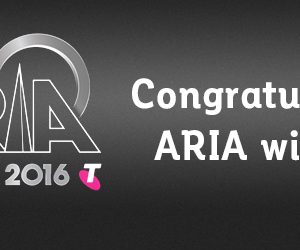






RESPONSES